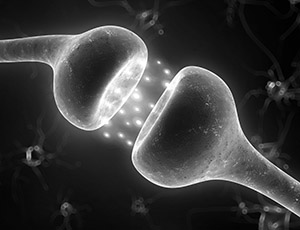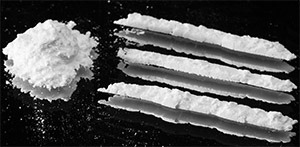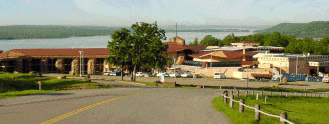Cocaine Effects
 Cocaine primarily affects the user by stimulating the nervous system and flooding the brain with dopamine (the feel good chemical in the brain responsible for pleasure, and the reward system). These pleasure signals cause intense euphoria, and drive the user to continue using cocaine to “maintain” this rush. This false sense of happiness is followed by a very dark low, because the brain is unable produce enough dopamine on its own.
Cocaine primarily affects the user by stimulating the nervous system and flooding the brain with dopamine (the feel good chemical in the brain responsible for pleasure, and the reward system). These pleasure signals cause intense euphoria, and drive the user to continue using cocaine to “maintain” this rush. This false sense of happiness is followed by a very dark low, because the brain is unable produce enough dopamine on its own.
People who use cocaine have a loss of appetite and this continued over a period of time will result in malnutrition. This compounds the deficiencies caused by the toxic effects of the drug itself.
As a user dives deeper into cocaine abuse their body and mind build up a tolerance to the drug, requiring more and more of the substance to produce the same effect. Users report they never achieve the same level of pleasure after their first use of cocaine. Cocaine is a stimulant and so increases the heart rate and constricts the blood vessels and users are at a very high risk for cerebrovascular, and cardiovascular emergencies, such as stroke, heart attack, or even death. Overdose or death due to cocaine use usually begins with cardiac arrest, followed by seizures, and respiratory failure.
Cocaine addiction and abuse have proven to be one of our nation’s biggest concerns. Recent studies have discovered that almost 15% of all Americans have used cocaine, and about 6% first used cocaine by their senior year in high school. These are just a few of the alarming figures that reveal just how serious cocaine abuse has become. Get help now. Call 800-468-6933
What is Cocaine?
Cocaine is classified as one of the most addictive stimulants. Cocaine first became popular in the 1980’s and 1990’s, however this does not mean that cocaine is a new drug. Cocaine is actually one of the oldest known psychoactive substances known to man. The source of cocaine, coca leaves has been chewed for many years by indigenous people to sustain energy. The purified form of cocaine, cocaine hydrochloride, has been used and abused for over 100 years.
Around 1900, cocaine became one of the most popular active ingredients in elixirs and tonics, and was believed to help to treat a variety of different ailments and illness.
Cocaine in its purest form is extracted from the Erythroxylon or “coca bush”. The coca bush is generally grown in Bolivia and Peru. In the early 1990’s Columbia became the nation’s leading producer of coca crops. Columbia continues to produces large quantities of cocaine despite crop reduction efforts. Because of cocaine high potential for abuse it is a Schedule II drug.
On the streets cocaine is generally sold in powder form. Cocaine is normally marketed in powder form, and goes by the names of Snow, Blow, Coke, White, or Flake. The cocaine sold in the United States is “cut” or diluted with talcum powder, sugar, procaine, amphetamine, or BC powder. Cocaine is abuse in two primary forms, powder and freebase or “crack cocaine”. In powder form cocaine can be injected, snorted or taken orally. Crack cocaine comes in a smokeable form, giving the user an intense rush when smoked.
Successful Recovery from Cocaine Addiction
 The following is a testimonial from a Narconon graduate that struggled with and recovered from cocaine addiction:
The following is a testimonial from a Narconon graduate that struggled with and recovered from cocaine addiction:
Before coming to Narconon I was a helpless lost soul who was a slave to this white powder known as cocaine. I was a broken, disconnected, emotionally distraught individual who had all but given up on life. My addiction disconnected me from those who loved and truly cared about me, and caused me to do things I never thought I was capable of. The Narconon program not only saved my life, but made me realize just how precious life really is. Since completing the Narconon program I now have 3 years of sobriety, faith, a family of my own, and now help others to beat this demon we call addiction.
And I owe it all to the Narconon Program.
Zac P. – Narconon Graduate
Cocaine recovery is possible with treatment. Call Narconon today at 800-468-6933.
References:
www.whitehousedrugpolicy.gov/streetterms/default.asp
Click here for more information on Narconon drug rehabilitation.


